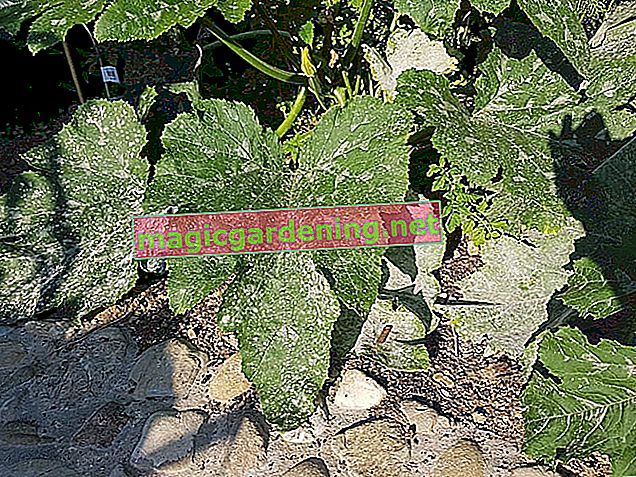
A garden is full of life, which includes mushrooms. Wouldn't it be boring to bake the perfect plant bed according to a recipe and then never have work again? Speaking of baking, baking powder is not only an important part of the kitchen cupboard, but also proves to be extremely helpful in botany. Although it doesn't completely take the work off, it makes the dream of the perfect garden a little more real. And all without chemical fungicides (or artificial flavors and additives as the baker would say).
also read
- Fight powdery mildew efficiently with milk
- Fight powdery mildew with buttermilk
- Fight powdery mildew on the hornbeam
Which factors favor powdery mildew infestation?
Powdery mildew is caused by a fungus that occurs in two types (more on this below). Often, small mistakes in the creation of a bed or care mistakes are sufficient, which offer the pest an optimal breeding ground:
- too little light
- poor air circulation due to plants that are too close together
- Temperature fluctuations
- very nitrogenous fertilizer
Making baking powder means
Instead of using fertilizers, however, you should regularly treat your plants to a baking powder cure. The home remedy is inexpensive, environmentally friendly and very easy to prepare.
Ingredients required
- 3 sachets of baking powder
- 5 liters of water
- some washing-up liquid
- four tablespoons of rapeseed oil
- a spray bottle
preparation
- stir the baking soda into the water
- add the rapeseed oil to the mixture
- add a splash of detergent to the solution. This serves as an emulsifier
- Now fill the home remedy in a spray bottle
application
- spray the affected leaves at regular intervals
- allow about ten days to pass between applications so that the product can work well
- repeat the application especially in heavy showers, as the precipitation washes the solution from the leaves
- spray the plants in the evening hours
Alternative home remedies and tips
Treating powdery mildew with a baking soda mixture is considered one of the most successful methods. For example, it proves to be more useful than the milk-water mixture also mentioned here. Ultimately, however, you have to decide for yourself which of the following home remedies to use as an alternative.
- Mix milk or whey or buttermilk with water
- make a broth from field horsetail
- Pour water over the garlic cloves
- Biologically based pesticides
- natural predators such as ladybugs
- Plant mixed cultures with basil, garlic, foxglove, chervil or chives
All of the above mentioned home remedies for powdery mildew are not only effective in acute infestation, but also serve as prophylaxis. The application remains the same even as a preventive measure.
How the baking powder works
The secret of the baking powder mixture is the plant protection substance lecithin. The causative fungus avoids this product.
Unfortunately only effective with powdery mildew
Unfortunately, the baking powder only drives out powdery mildew. It is therefore important not to simply resort to any home remedy, but to take a close look at the symptoms. How to tell what type of powdery mildew it is:
Powdery mildew
Powdery mildew is also known as a fair weather mushroom. It is a hose fungus that is noticeable as follows:
- Topping: white, floury, easy to wipe off
- appearance of symptoms: early spring
- preferred climatic conditions: warm temperatures of 20-25 ° C, morning dew, dryness during the day
- Distribution: by insects and wind
- Damage: brown, dried up leaves, leaves curl up, no flower formation, crooked plant parts, stagnation of growth, death in the case of very heavy infestation
- Occurrence: on the upper side of the leaf, on flowers and buds as well as the plant stem
- further characteristics: specialized in individual plant species, insensitive to frost and cold
- preferred plants: roses, cucumbers, carrots, asters, gooseberries
Wrong mildew
Unlike powdery mildew, downy mildew is an egg or algae fungus, which is also known as a bad weather fungus.
- Symptoms: gray or brown deposits
- Occurrence: on the underside of the leaf
- appearance of symptoms: later in the year
- preferred plants: all kinds of ornamental plants, kohlrabi, cabbage, lettuce, onions, spinach
- preferred climatic conditions: humid air, low temperatures of 15-20 ° C
- Damage: brown, yellow or purple discoloration of the leaves, death of the plant
- further characteristics: penetrates the plant, only affects the leaves







